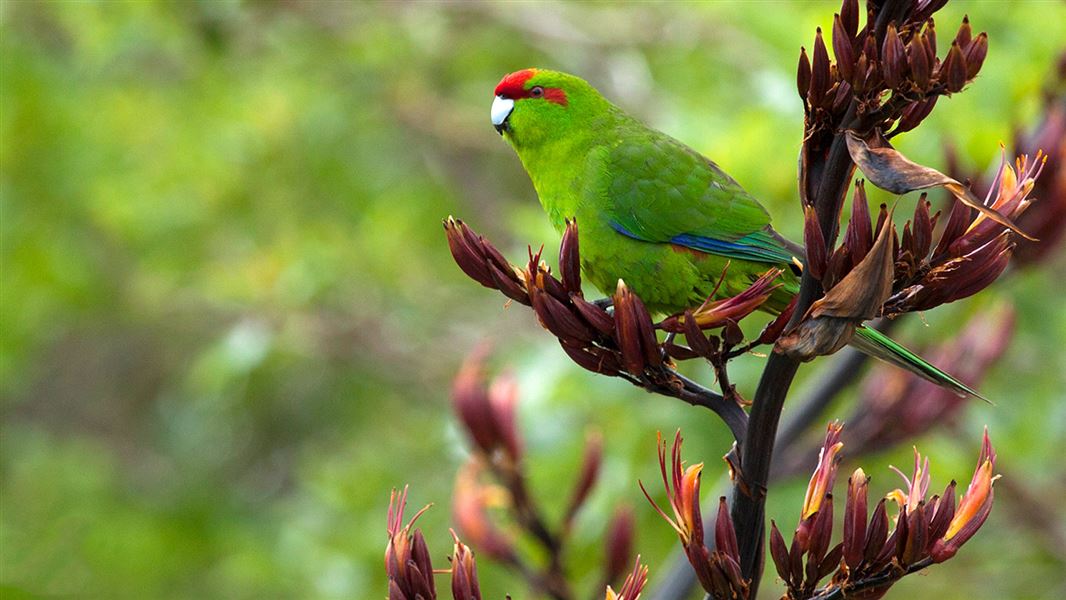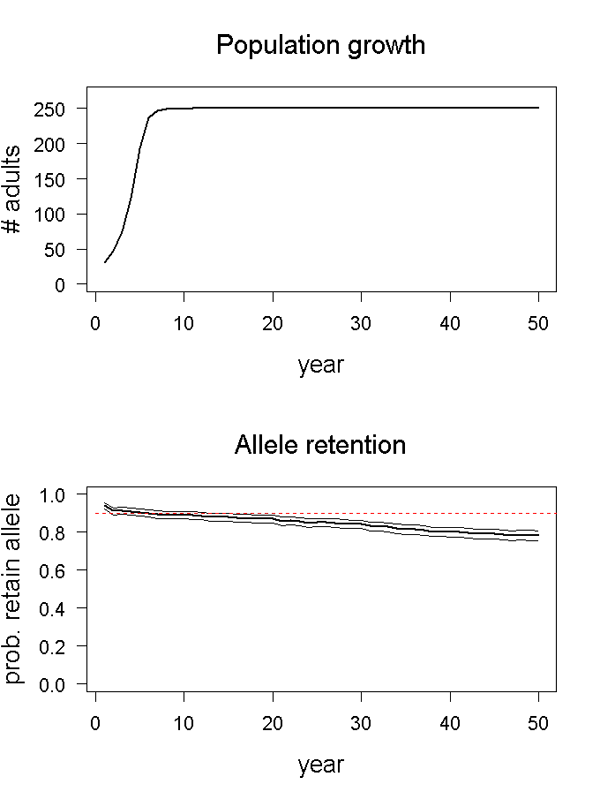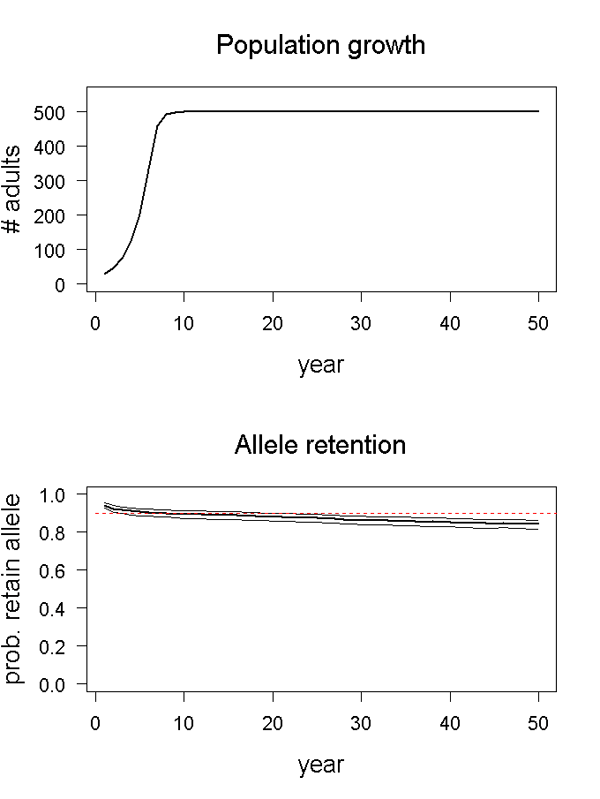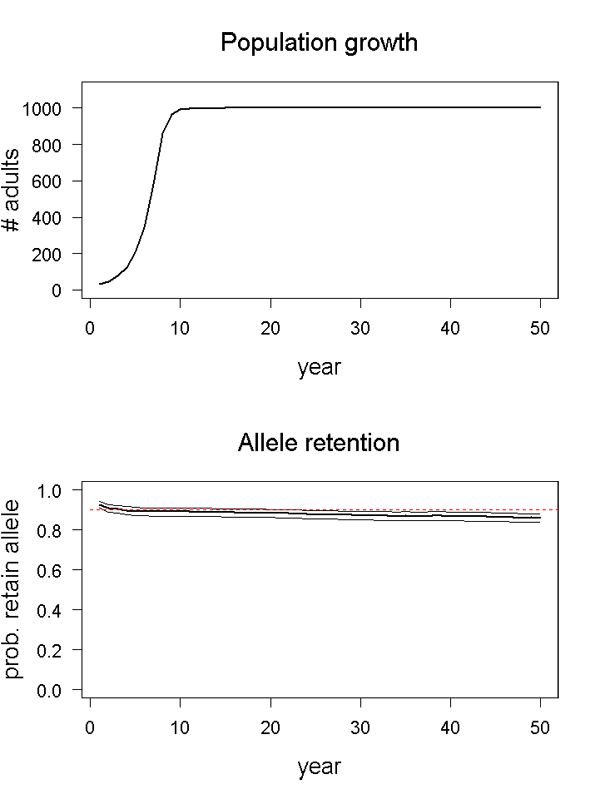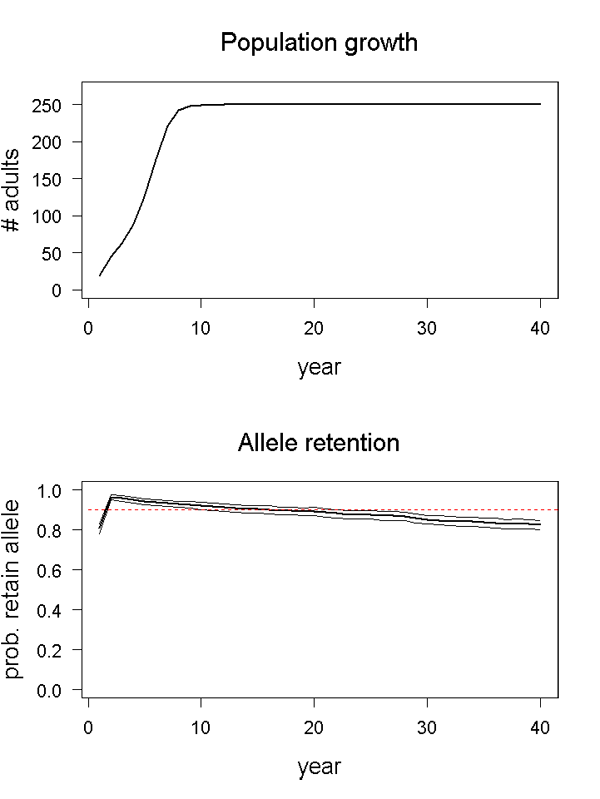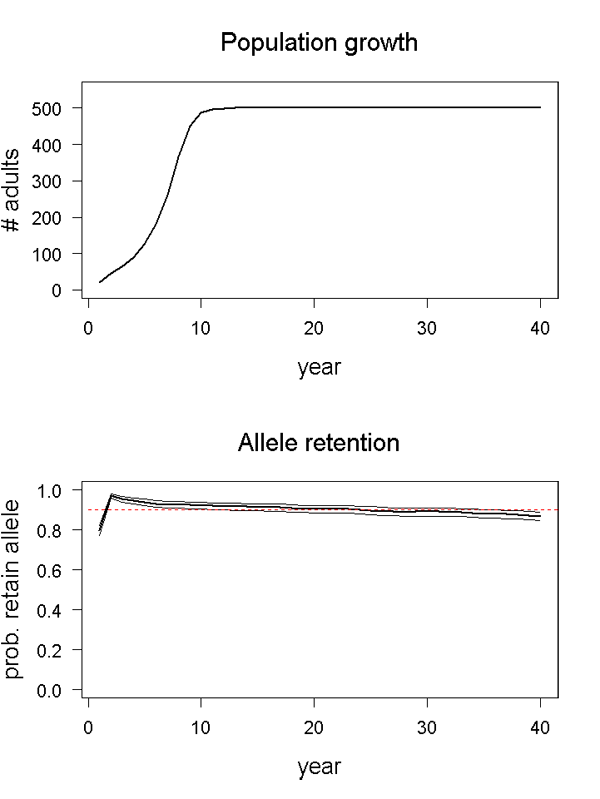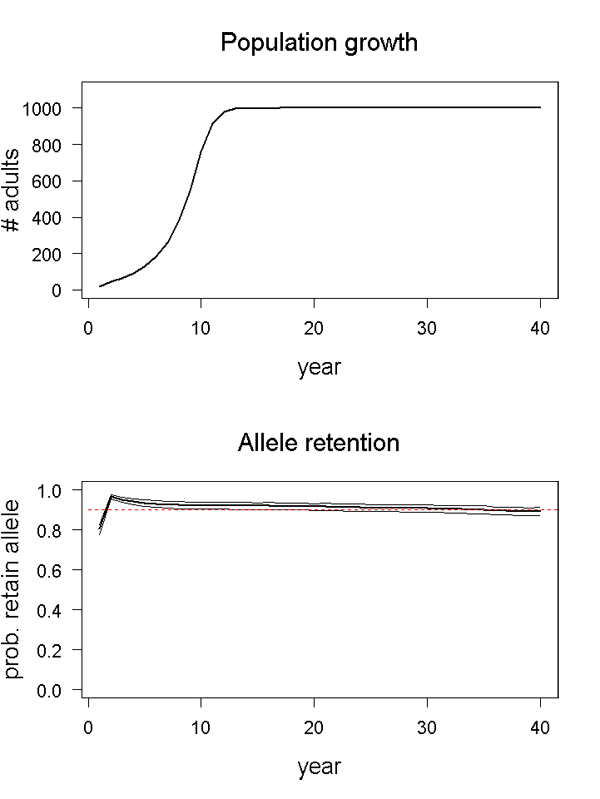First determine your habitat connectivity, habitat size and predator control levels of the translocation site; then view the predicted success of translocations for different scenarios.
Points to note if you are translocating this species
Red-crowned kākāriki use a wide variety of habitats, including native inland and coastal forests, scrublands, edge habitats and open areas.
They require cavities for nesting and roosting, and show a preference for cavities in large trees – although they have also been recorded using holes in cliffs, rocky crevices, holes and burrows in the ground, and holes in the dense, matted bases of tussocks and sedges. You could provide nest boxes that are suitable for kākāriki at the translocation site to enhance breeding.
All successful mainland translocations to date have released wild-caught birds.
Some island populations have originated from hybrid founders and so are unsuitable as a translocation source. Similarly, genetic testing has shown that most captive birds are hybridised and therefore unsuitable for release.
Psittacine beak and feather disease is present in some wild and captive populations. Therefore, you will need to carefully assess the source population for this disease before carrying out your translocation.
Factors of success for red-crowned kākāriki
Founder number for maximising genetic diversity
60–120 birds
Habitat connectivity
Red-crowned kākāriki have very high dispersal abilities, being able to cross water gaps ≥ 40 km. However, they have been successfully translocated to two mainland sites that have medium/high connectivity with the surrounding landscape (Tawharanui Regional Park and Zealandia).
Low (isolated) and Medium
Red-crowned kākāriki are good fliers and are capable of flying long distances, but have successfully established at some sites. The dispersal tendencies of kākāriki are unknown. However, at least some birds remain at release sites, and birds from Tiritiri Matangi Island have been observed flying 3.4 km to the mainland and then returning. Populations have successfully established despite suitable habitat being very close by (e.g. Matiu/Somes Island, Tawharanui Regional Park).
High (adjoining)
Unknown – there have been no releases into highly connected sites.
Habitat size
Small (minimum area)
100 ha – they will disperse to other sites, so management should be extended to those sites if possible. Population density is variable and appears to fluctuate in response to resource availability, but red-crowned kākāriki can reach very high densities on relatively small islands.
Medium
c. 200 ha
Large
≥ c. 400 ha
Minimum predator control
If you are translocating red-crowned kākāriki, all mammalian predators (with the exception of mice) will need to have been eradicated from the release site or be permanently maintained at zero density. This species' requirements are unknown, but they are highly susceptible to mammalian predators, particularly mustelids and rats, because they nest in cavities and sometimes on the ground, and fledglings spend long periods on the ground. Cats could also be significant predators, especially in open or edge habitats. All successful mainland translocations have been to sites that are protected by predator-resistant fences.
Predators maintained at low density
Red-crowned kākāriki cannot be translocated to sites where predators are maintained at a low density.
Predators eradicated
This requires the total eradication of all target predators with the exception (in most cases) of mice, or the maintenance of zero density year-round.
Predicted success for scenarios
Red-crowned kākāriki: Scenario 1
Scenario: Low habitat connectivity, small habitat size, predators eradicated.
Data source: There have been few monitored kākāriki translocations. Therefore, some data were obtained from Zealandia while other values were estimated by experts. Initial adult and juvenile survival and age were increased to reflect the low connectivity of the site. There is no certainty in the results, however.
Conditions: 60 birds were translocated in year one; the carrying capacity of the site was 250 kākāriki; there was no migration.
Outcome: A viable population will likely establish and c. 80% of genetic diversity will be maintained over ten generations. You could improve this result by choosing a larger site (see Scenarios 2 and 3).
Red-crowned kākāriki: Scenario 2
Scenario: Low habitat connectivity, medium habitat size, predators eradicated.
Data source: There have been few monitored kākāriki translocations to date. Therefore, some data were obtained from Zealandia while other values were estimated by experts. Initial adult and juvenile survival and age were increased to reflect the low connectivity of the site. There is no certainty in the results, however.
Conditions: 60 birds were translocated in year one; the carrying capacity of the site was 500 kākāriki; there was no migration.
Outcome: A viable population will likely establish and 80–90% of genetic diversity will be maintained over ten generations.
Red-crowned kākāriki: Scenario 3
Scenario: Low habitat connectivity, large habitat size, predators eradicated.
Data source: There have been few monitored kākāriki translocations to date. Therefore, some data were obtained from Zealandia while other values were estimated by experts. Initial adult and juvenile survival and age were increased to reflect the low connectivity of the site. There is no certainty in the results, however.
Conditions: 60 birds were translocated in year one; the carrying capacity of the site was 1000 kākāriki; there was no migration.
Outcome: A viable population will likely establish and 80–90% of genetic diversity will be maintained over ten generations. Note that the retention of rare alleles improves with an increase in habitat size (c.f. Scenarios 1 and 2).
Red-crowned kākāriki: Scenario 4
Scenario: Medium habitat connectivity, small habitat size, predators eradicated.
Data source: There have been few monitored kakariki translocations to date. Therefore, some data were obtained from Zealandia while other values were estimated by experts. Initial adult and juvenile survival and age were increased to reflect the medium connectivity of the site. There is no certainty in the results, however.
Conditions: 60 birds were translocated in year one followed by a further 60 in year two; the carrying capacity of the site was 250 kākāriki; there was no migration.
Outcome: A viable population will likely establish and 80–90% of genetic diversity will be maintained over ten generations. Note that this result requires two consecutive translocations to compensate for dispersal (c.f. the single translocations required in Scenarios 1–3).
Red-crowned kākāriki: Scenario 5
Scenario: Medium habitat connectivity, medium habitat size, predators eradicated.
Data source: There have been few monitored kākāriki translocations to date. Therefore, some data were obtained from Zealandia while other values were estimated by experts. Initial adult and juvenile survival and age were increased to reflect the medium connectivity of the site. There is no certainty in the results, however.
Conditions: 60 birds were translocated in year one followed by a further 60 in year two; the carrying capacity of the site was 500 kākāriki; there was no migration.
Outcome: A viable population will likely establish and 80–90% of genetic diversity will be maintained over ten generations. Note that this result requires two consecutive translocations to compensate for dispersal (c.f. the single translocations required in Scenarios 1–3).
Red-crowned kākāriki: Scenario 6
Scenario: Low habitat connectivity, large habitat size, predators eradicated.
Data source: There have been few monitored kākāriki translocations to date. Therefore, some data were obtained from Zealandia while other values were estimated by experts. Initial adult and juvenile survival and age were increased to reflect the low connectivity of the site. There is no certainty in the results, however.
Conditions: 60 birds were translocated in year one followed by a further 60 in year two; the carrying capacity for the site was 1000 kākāriki; there was no migration.
Outcome: A viable population will likely establish and 80–90% of genetic diversity will be maintained over ten generations. Note that this result requires two consecutive translocations to compensate for dispersal (c.f. the single translocations required in Scenarios 1–3).
